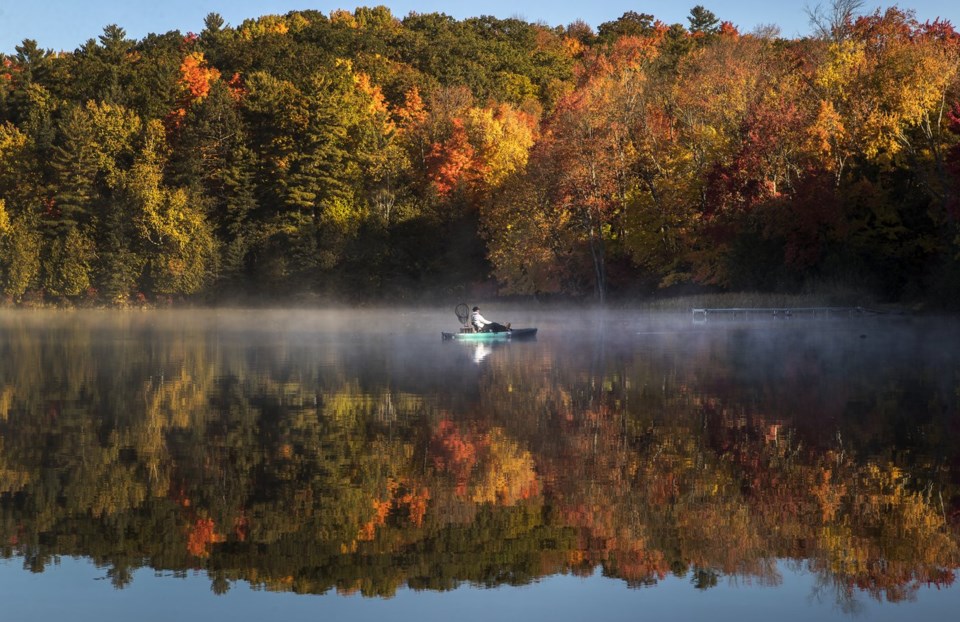TORONTO — An especially warm fall in Ontario means the province may not get the colourful array of fall foliage that usually transforms treetops this time of year.
Some parts of Ontario, particularly the Greater Toronto Area, experienced higher than normal temperatures in September, and that weather pattern leads to duller colours, experts say.
“The weather that really promotes bright fall colours — strong fall colours — is a combination of sunny and cold, and we have been more sunny and warm,” said Susan Dudley, a professor of biology at Hamilton's McMaster University.
While temperatures have dropped recently, she said it might be too late for the physiological process that triggers trees to change their colours.
“The weather has been strange, (it) has been very warm up till recently.”
Daylength, tree species and weather conditions are three key factors that determine the colour of autumn leaves, according to experts.
Eastern parts of North America in general, and Ontario in particular, typically have the right combination of these three factors, resulting in vibrant yellow, orange and red foliage, Dudley said.
Ontario's fall can also be stunning because the province has a longer and colder fall season with enough daylight, and is home to different kinds of woody plants, including maple trees that usually produce beautiful golden and red pigments.
Since weather is the only component that varies from year to year, it has a greater impact on the kind of foliage people can expect, Dudley continued.
Experts say three chemicals play a vital role in the production of pigments in a leaf.
Chlorophyll is responsible for green colour during the growing season, and carotenoids give them a yellow hue that becomes more visible after chlorophyll breaks down.
The third chemical is anthocyanins, which is specifically formed when sugar concentration increases in the leaf. It's responsible for the red, orange and golden pigments.
Sean Thomas, a professor of forest ecology at the University of Toronto, said close to freezing temperatures — but not frost — combined with bright sunlight is vital to brighter foliage.
“We’ve had pretty summery temperatures until the last week or so and still nothing close to that, say, one-to-two degrees Celsius overnight temperatures” that is needed, he said.
Fall colours are more vibrant in areas north of the Greater Toronto Area where the weather has been colder, Thomas noted.
Climate change has brought with it a steady rise in temperatures, warmer fall seasons and more precipitation and cloud cover, experts say.
That suggests duller and less colourful falls might become more common in the long run, they warn.
“This year really captured those (changes), especially the higher precipitation inputs and that in general is not a good long-term forecast for vibrant fall colours,” Thomas said.
Ontarians still have a chance to see some tree colours before the province is blanketed with snow but it won't last as long as previous years.
Thomas said that while weather conditions were not favourable in September, cold snaps in the past week could bring beautiful foliage before the fall ends.
“We will see something, but, likely not, you know, quite what we saw last year,” he said.
“We're still in the window where if we get those cold (snaps) some trees will give us a show.”
This report by The Canadian Press was first published Oct. 14, 2024.
Sharif Hassan, The Canadian Press




